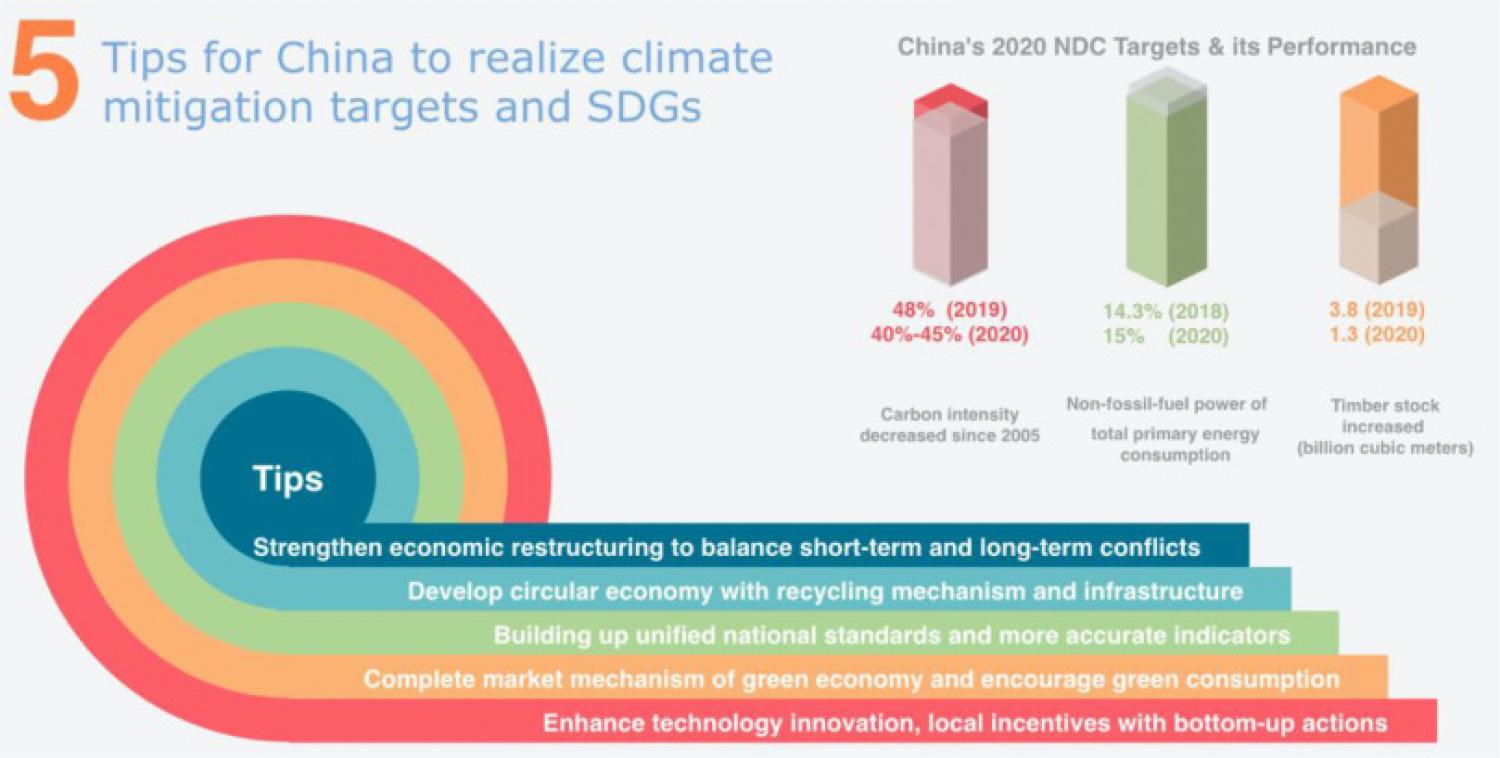
In 2018, a total of US$166 billion global economic losses and a new high of 55.3 Gt of CO2 equivalent emission were generated by 831 climate-related extreme events. As the world's largest CO2 emitter, we reported China's recent progresses and pitfalls in climate actions to achieve climate mitigation targets (i.e., limit warming to 1.5–2°C above the pre-industrial level). We first summarized China's integrated actions (2015 onwards) that benefit both climate change mitigation and Sustainable Development Goals (SDGs). These projects include re-structuring organizations, establishing working goals and actions, amending laws and regulations at national level, as well as increasing social awareness at community level. We then pointed out the shortcomings in different regions and sectors. Based on these analyses, we proposed five recommendations to help China improving its climate policy strategies, which include: 1) restructuring the economy to balance short-term and long-term conflicts; 2) developing circular economy with recycling mechanism and infrastructure; 3) building up unified national standards and more accurate indicators; 4) completing market mechanism for green economy and encouraging green consumption; and 5) enhancing technology innovations and local incentives via bottom-up actions.
